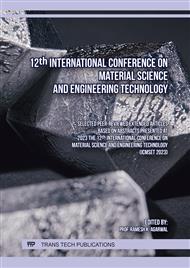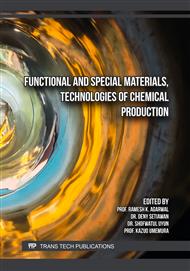p.65
p.77
p.85
p.93
p.99
p.105
p.111
p.121
p.127
Investigation on Layer Thickness on Mechanical Properties and Dimension Accuracy in Fused Deposition Modelling 3D Printing
Abstract:
In the current era of additive manufacturing, Fused Deposition Modelling (FDM) method of printing is being studied extensively to print a concept model. Therefore, the dimensional accuracy and the mechanical properties of the FDM 3D printed part are very important. In this study, the tensile specimens are prepared according to ASTM D638 Type I. Dimensions of the specimen is measured in the x-direction (length), y-direction (width), and z-direction (height) and is compared against the standard measurement for accuracy. Tensile stress, strain at break and Young’s modulus were also investigated. Overall, the dimension accuracy achieved is more than 98%. The highest accuracy is obtained by using 0.2mm layer thickness and 0.2mm initial layer thickness. The tensile stress, Young’s modulus and strain at break are found to decrease when the layer thickness is increased. This is due having more layer with lesser and smaller voids which increases the strength and stiffness. Increasing initial layer thickness, however, has a low influence on the tensile stress but can greatly affect the Young’s modulus.
Info:
Periodical:
Pages:
99-104
Citation:
Online since:
March 2024
Authors:
Price:
Сopyright:
© 2024 Trans Tech Publications Ltd. All Rights Reserved
Share:
Citation:



